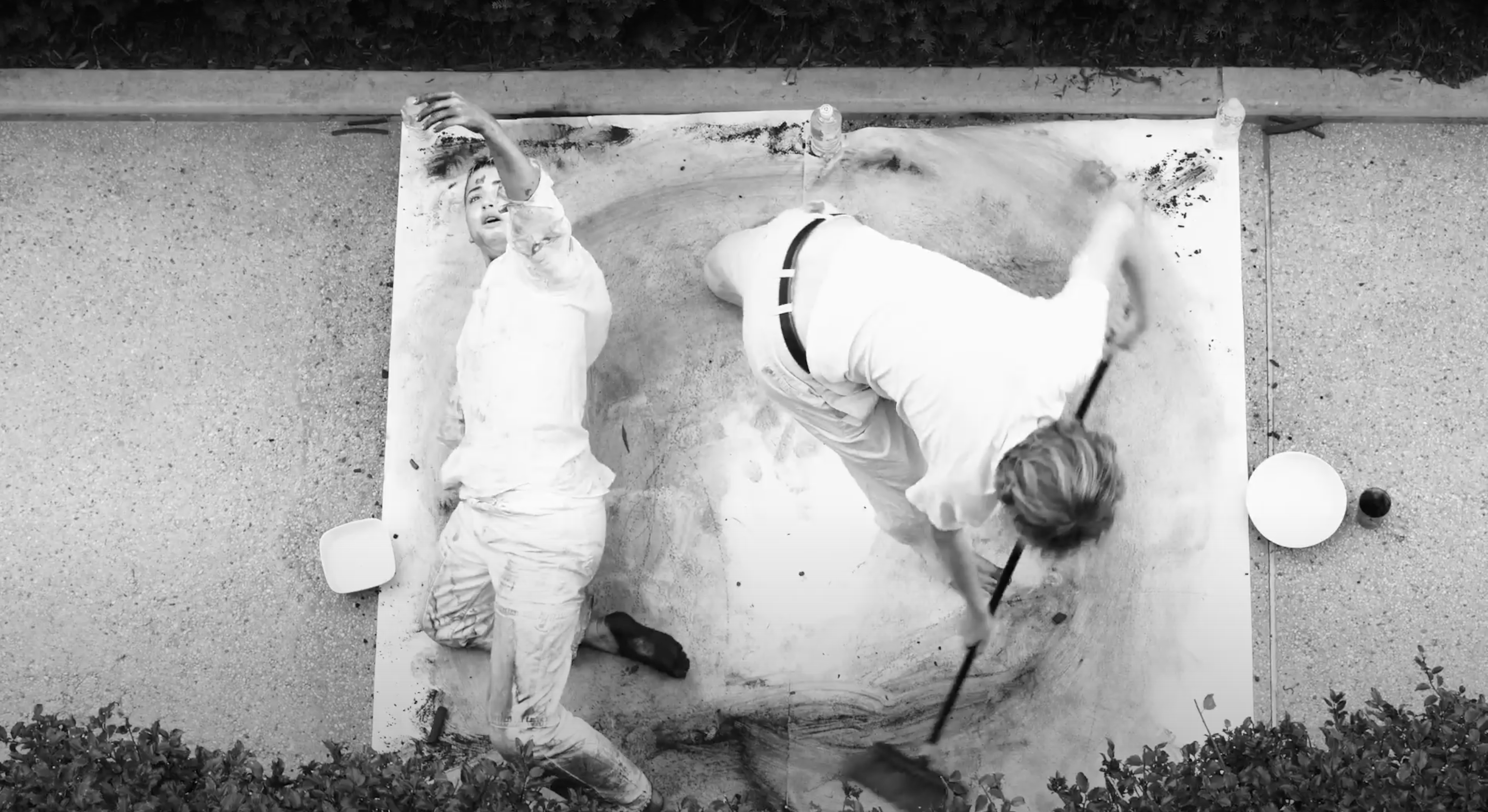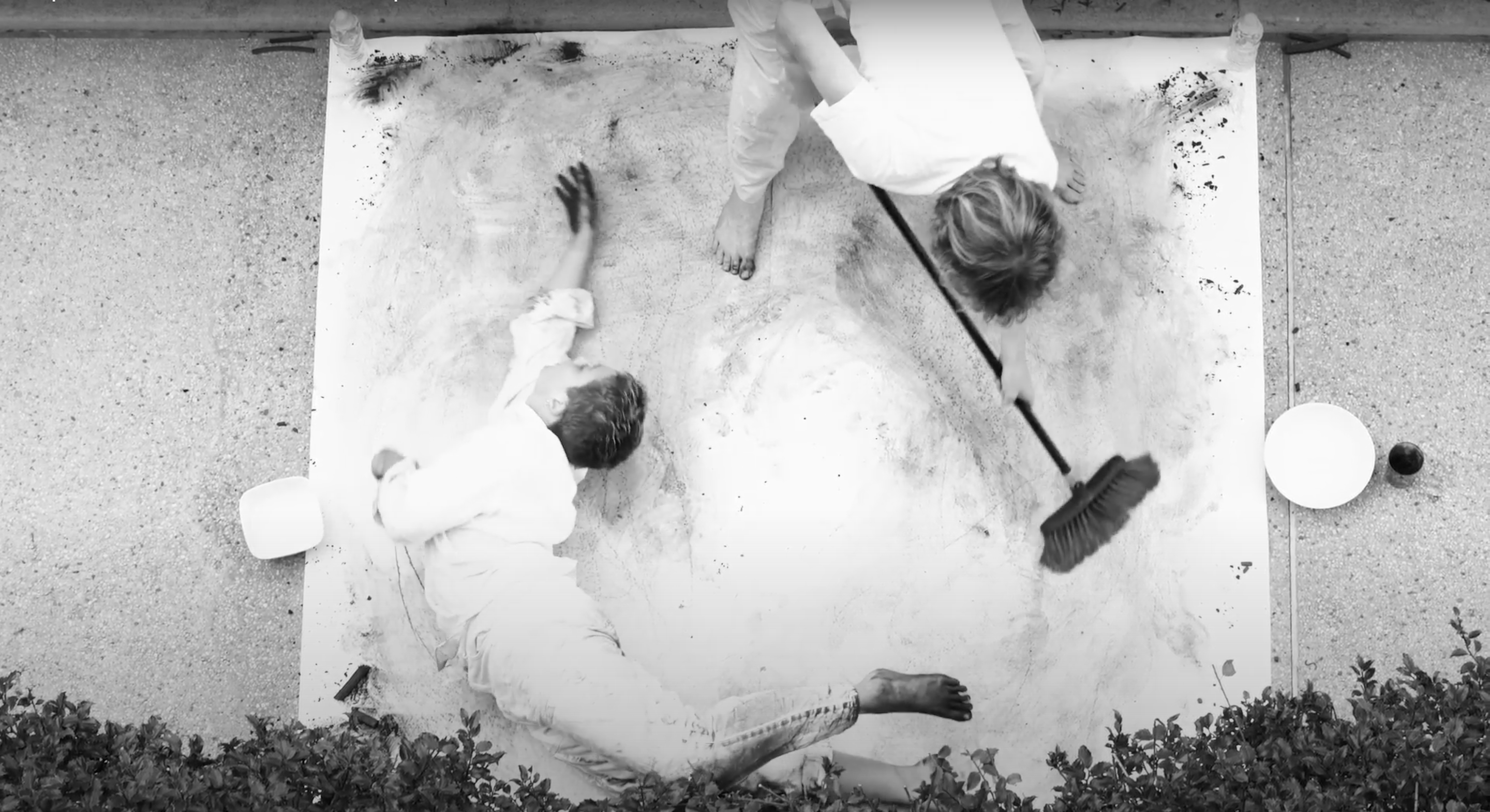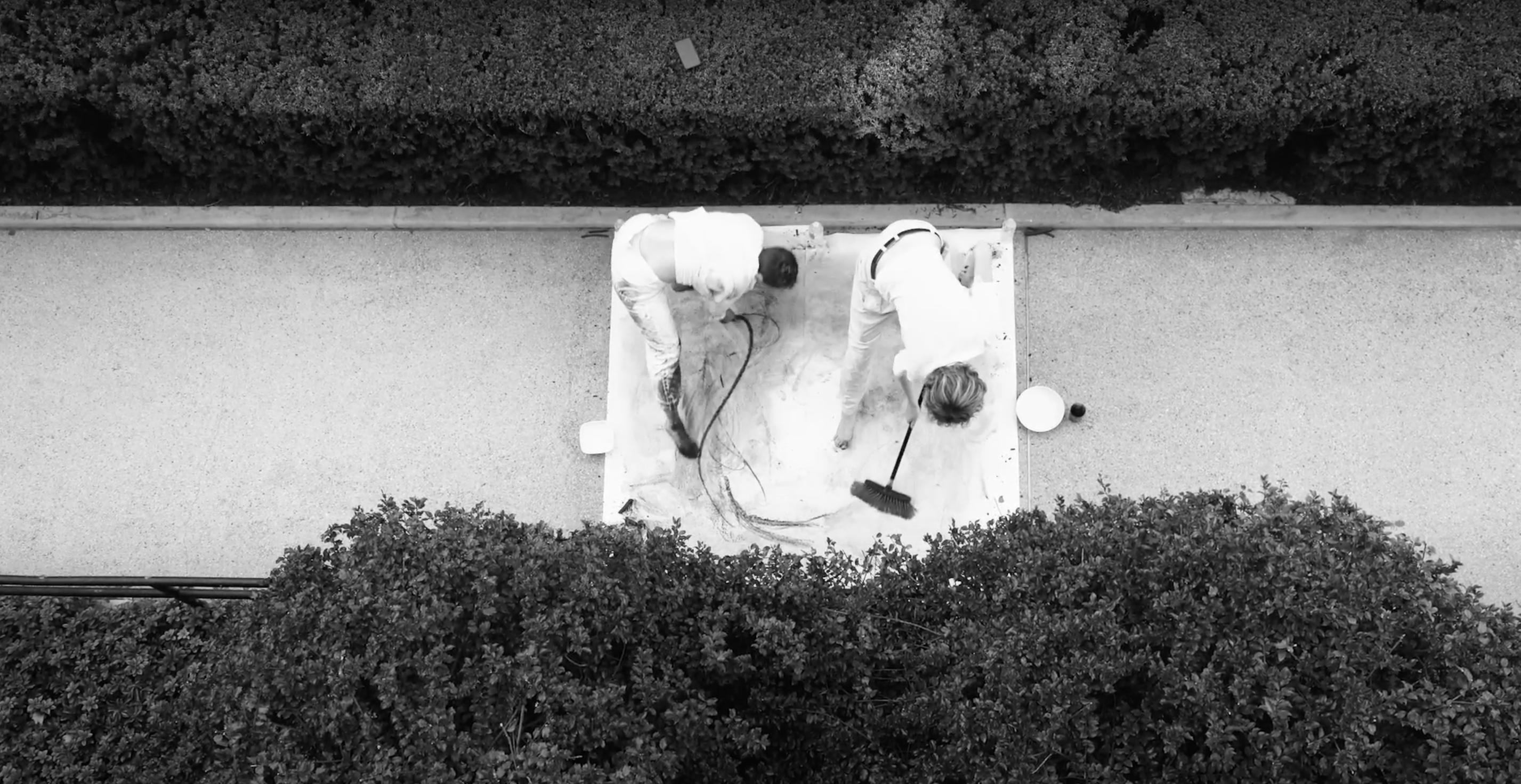Circle, 2022
Video
By Sophia Arnaboldi, Barnard College, and Oliver Rice, Columbia University
Videography by Milly Hopkins
Originally published in the 2023 print edition.
Exhibition text by Oliver Rice:
Dance and drawing are alike in many ways. Both are gestural; both come about because of a moving body. The key difference between the two consists, then, not so much in the process; drawing a drawing and dancing a dance are fundamentally quite similar. Rather, it consists in how the work appears, in how this process shows up. What is the finished product? How long does it last? Are process and product the same, or different? For drawing, process and product are typically distinct. You see the product, not the process; you see the evidence of a moving body, and not the moving body itself. With dance, it’s the reverse. You only see the process—the dance—and at the end of it there is no record. One could draw from this a set of distinctions:
dance / drawing
process / product
impermanent / permanent
performative / productive
verb / noun
intangible / tangible
process / product
impermanent / permanent
performative / productive
verb / noun
intangible / tangible
Of course, these dichotomies are reductive. The words ‘dance’ and ‘drawing’ themselves point to a flaw in this kind of rigid classification, since they function simultaneously as verbs and nouns. There is no such thing as ‘a drawing’ without the physical act of drawing, just as there is no such thing as ‘dancing’ without the creation of ‘a dance,’ in the broadest sense of the word. Like the yin-yang, dance and drawing contain the seed of one another. A highly-gestural drawing that is performed cannot but become a kind of dance, and a dance whose gestures are recorded cannot but become a kind of drawing. So perhaps one would be better off thinking of dance and drawing as two poles on a spectrum:
dance ↔ drawing
process ↔ product
impermanent ↔ permanent
performative ↔ productive
verb ↔ noun
intangible ↔ tangible
process ↔ product
impermanent ↔ permanent
performative ↔ productive
verb ↔ noun
intangible ↔ tangible
Circle is situated somewhere in the middle of these, or, better yet, it occupies opposite poles simultaneously. Sophia dips their hands in charcoal and dances, mark-making as they move. I smear these marks with a broom, my body in repetitive motion. The draw-er dances and the dancer draws. Dance and drawing, ephemerality and durability, are combined, and the permanence of the ‘final product’ is, accordingly, ambiguous. By the time the video is over, the paper on which charcoal and erasure marks were made is inscribed with a circular gray smear. It is a drawing—a mark has been made—but it hasn’t adequately recorded Sophia’s movements. It is permanent like a drawing and impermanent like dance. And yet, like dance, the final product consists not so much in the record as in the action. Video enabled us to highlight this performative dimension of the work; really the ‘final product’ is the video itself, and not the finished gray circle that appears for a few seconds at the end.
The circle, finally, is beautiful and mysterious, and its wholeness seems to have something to do with dance and drawing, two mediums which, we would like to suggest, form a kind of whole and as such cannot be easily separated from one another without losing something.
Oliver Rice has been a designer at JAC since 2022




